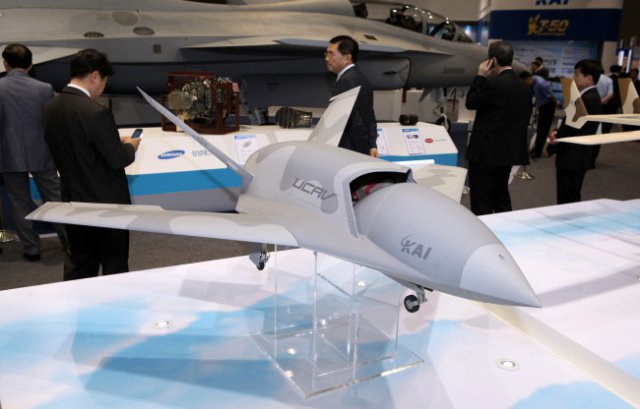 Korea Aerospace Industries (KAI) makes FA-50 fighter jets, supersonic trainer T-50s, which the light attacker was based on, and the Surion utility helicopter at a facility as big as three soccer fields on the country’s southern coastal. Now it seeks to expand its portfolio to accommodate the defence needs of Korea’s armed forces, as well as those of its allies.
Korea Aerospace Industries (KAI) makes FA-50 fighter jets, supersonic trainer T-50s, which the light attacker was based on, and the Surion utility helicopter at a facility as big as three soccer fields on the country’s southern coastal. Now it seeks to expand its portfolio to accommodate the defence needs of Korea’s armed forces, as well as those of its allies.
With the technological know-how gained through years of working with world-leading firms such as Lockheed Martin, Boeing and Airbus, the South Korean aircraft maker seeks to develop next-generation unmanned aerial vehicles.
KAI believes that drones, with stealth and dogfight capabilities, can further provide support to the armed forces facing growing unconventional threats in which enemies have become harder to detect and engage.
“It has been said that the F-35 Joint Strike Fighter would be the last manned aircraft (to be developed and deployed),” Lee Dong-shin, Vice-President of KAI’s management and finance division, told a group of reporters.
“Drones would emerge as fifth-generation aircraft.”
KAI is currently developing a UAV for the Army that can outperform both in technology and mobility its first drone, called Night Intruder, which has been in operation since 2000.
Although it only exists in concept, a KAI official said it would develop a “Kamikaze” UAV, in which the drone itself is a missile with GPS and camera systems that can track and acquire difficult targets especially hidden in caves, as soon as the government gives the green light.
“It could, for instance, be used when targeting North Korean artillery that is camouflaged inside caves,” the official noted.
With technological advancement, UAVs have become useful for reconnaissance and surveillance in danger zones, as can be seen from the increase in their use by the U.S. in recent years.
They not only reduce the risk of pilot casualties, but also achieve longer-distance covert missions cost-efficiently.
“They are substantially less expensive than human airplanes, and they have much longer flight times and longer ranges,” said Richard A. Muller, senior scientist at the Lawrence Berkeley Laboratory, in an email interview.
“One challenge for defense problems is the use of lightweight long-range engines.”
Muller, known for his book “Physics for Future Presidents,” added that their advantage is that they can be made “stealthier and smaller and can supplement, not replace, manned jets.”
The two Koreas recently had indirect engagements with both sides seeing their UAVs crash land during operations. This led many to speculate whether South Korea has what it takes to make and run advanced drones.
